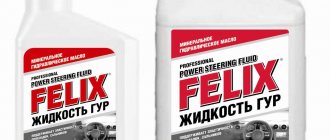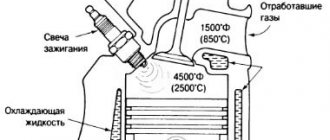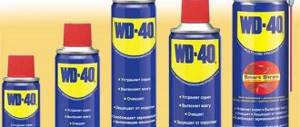Russian drivers still prefer a manual transmission to an automatic transmission. There are too many reasons to list here. All mechanisms need lubrication, including the transmission. True, the frequency of replacement is still not the same as for the engine: approximately once every 60-80 thousand km .
The market for oils produced in Russia is wide. But with all the diversity, in terms of production volume, one of the favorites is transmission oil TAD 17 (TM 8-15), oil for manual transmissions.
General characteristics of the product
Transmission oil " TAD " belongs to the category of mineral fluids. If you look at the markings, then first of all you need to pay attention to GOST . Because according to the latest document, the name TAD 17 is considered obsolete , and it was replaced by TM 8-15 , which is recorded in GOST 17479.2-85. This marking is more consistent with international standards. Although there is an opinion that this marking belongs to an analogue of TAD 17, which is incorrect. This is the same oil. But the old name can still be found on labels.
The abbreviation TAD stands for simply:
- T – transmission;
- A – automobile;
- D – long service life;
- 17 – degree of viscosity at operating temperature.
If we turn to the international classification API , then it falls into the group of lubricant products GL 5 due to the presence of sulfur-phosphorus additives. According to SAE , where lubricants are regulated by viscosity, the domestic product is similar to 85W-90.
It does not foam, has high heat resistance, and has stable lubricating characteristics.
TAD-17 oil: technical characteristics, application
TAD 17 oil is optimal for use in manual transmissions. Lubrication allows transfer cases and drive axles to function correctly.
Today, manufacturers provide drivers with a large selection of petroleum products for transmission. Among them, TAD transmission oil is especially popular.
Scope of use
The gearbox contains parts that are in continuous motion. The parts interact with each other. The teeth that the gearbox is equipped with are subject to a lot of pressure. If the lubricant is squeezed out of the contact area of the gears, the teeth may become deformed. In the absence of high-quality motor oil, spare parts wear increases.
When choosing an oil fluid, you need to carefully read its technical characteristics. A high-quality petroleum product forms a thin film on contacting parts, which is very durable. The film effectively protects the unit during its operation.
Nowadays, to lubricate the gearbox, many motorists pour TAD-17 transmission fluid into the unit. This consumable, intended for gearboxes, is considered a universal motor oil. TAD-17 lubricant is poured into the following transmissions:
- conical-spiral;
- cylinder;
- worm;
- hypoid;
- conical
Transmissions carry high loads. The use of lubricating fluid allows the unit to function correctly. Transmission lubricant TAD 17 can be poured into production equipment, machines, tractors.
Composition of automobile oils
It is made by mixing residual elements and distillates. Depressant, phosphorus-sulfur-containing components are added to motor oil. This is precisely why the TAD-17 has such high technical characteristics. Distillates are produced by distilling fuel oil using the fractional method. Anti-foam additives increase the performance of the petroleum product.
TAD-17 complies with GOST 23652-79. It contains a detailed description of the properties of the petroleum product. The viscosity class of the oil is eighteenth. Where does this lubricant fall under the API specification? It is classified as GL-5. The minimum temperature limit is minus twenty-five degrees, the maximum is plus one hundred and forty. Consumables need to be replaced every 80 thousand kilometers.
Performance indicators
High-quality lubricant should not contain mechanical impurities. The concentration of sulfur elements in TAD-17 is 2-2.4 percent. The ash content is three tenths of a percent. The flash point in an open crucible is 200 degrees.
Due to the fact that this petroleum product is classified as a consumable for transmission, special requirements are put forward for its properties. It should significantly reduce the wear of spare parts and prevent them from welding in areas of contact.
Oil liquid TAD-17
The operating period of the unit when using TAD-17 motor oil is greatly increased. This is due to the anti-seize additives contained in the consumables.
According to the SAE classification, which divides oils by viscosity, TAD-17 is classified as 85W-90. This is a heat-resistant petroleum product that significantly reduces the operating noise of the unit. The lubricant is not subject to foaming and provides excellent protection of transmission parts from corrosion. It can be safely poured into both new vehicles and cars with considerable mileage.
Changing transmission oil
The lubricant in the gearbox must be changed at the intervals specified in the operating manual. In addition, it is necessary to take into account the recommendations of the car manufacturer specified in the service book.
Replacing transmission consumables is not carried out as often as changing engine lubricant. You can pour mineral water into the gearbox, but universal or synthetic petroleum products are usually used.
Before pouring new oil, you need to find out what kind of lubricant has already been poured into the transmission unit. However, you can always use imported analogues of TAD-17, which have high performance indicators.
Remember that if a petroleum product begins to smell bad, in other words, stink, it needs to be replaced. A burning smell indicates the exhaustion of the service life. A sharp change in color is also a sign that the consumable needs to be changed. Do not delay replacement until later, otherwise various problems may occur in your car.
motoroil.ru
Purpose
The oil is recommended for use in manual transmissions, axles and transfer mechanisms for domestic , but can also be used in other areas of mechanics:
- for agricultural machinery;
- for attachments;
- for stationary installations with rotating gear mechanisms.
- for long-term preservation of equipment.
is not used for automatic transmissions .
TAD 17 is used for the following purposes:
- protection of metal surfaces from corrosion;
- reducing friction and wear;
- preventing jamming in mechanisms;
- from the formation of pitting (cavities) on gears;
- heat removal;
- reducing the noise of machinery.
Where is TAD-17 used?
The lubricant is designed for servicing manual gearboxes, transmission units, gearboxes, and axles of passenger cars. The oil meets the requirements of light trucks and passenger cars. Suitability for use in agricultural, construction and highly specialized equipment is also noted.
The lubricant effectively protects hypoid, worm, and cylindrical gears.
Physical and mechanical properties
The oil belongs to the category of highly purified materials with a low content of sulfur additives. Technical characteristics depend on its physical and chemical properties, which in general look like this:
- The operating temperature of TAD 17 is in the range from -20°C to +135°C.
- Lubrication resource is about 80 thousand km. before replacement.
- Kinematic viscosity at 100°C is in the range of 14-25.
- The viscosity index is above 100 , which meets the requirements of GOST.
- Density is 907 g/l.
- The pH of the oil is neutral .
We can say that all characteristics comply with GOST for this type of lubricants.
TAD 17 and TAD 17I
Relatively recently, a type of oil appeared, which is labeled TAD 17I.
The difference between these two lubricants does not concern their basic properties and we can only talk about the filling of components . “I” marking indicates that imported components were used in production. Basically, additives have been replaced, which are responsible for characteristics such as wear resistance and foam formation. To be precise, it was replaced, for example, by molybdenum disulfide with a more stable additive for elevated temperatures Molyslip XR250R .
If you compare these two oils in operation, there is no . Both varieties have differences, perhaps in price.
Tad-17 technical specifications, where is it poured?
Among the brands of transmission oils produced in Russia and the CIS countries, Tad-17 brand lubricant will probably top the popularity rating. The oil is considered universal, it protects well the rubbing parts of shafts and mechanical gears, and has antioxidant properties.
Composition and labeling
Transmission oil Tad-17, produced in accordance with the technical requirements of GOST 23652-79 (as well as its closest analogue - oil Tad-17i), is intended for use in domestic passenger cars. Suitable for manual transmissions (especially hypoid ones), drive axles, and some control systems of passenger cars with a classic rear-wheel drive layout. According to the international classification, it belongs to class GL-5 oils. It is not used in transmissions of trucks and heavily loaded special equipment, since it has initially increased viscosity, which increases the vehicle control effort (in such cases, Tep-15 lubricant is more in demand).
The composition of transmission oil Tad-17 includes:
- Naphthenic oil with a density of at least 860 kg/m3.
- Distillate oil.
- Extreme pressure additives containing sulfur and phosphorus.
- Anti-wear additives based on molybdenum disulfide.
- Other components (anti-foam, anti-delamination, etc.).
It is difficult to indicate the exact chemical composition of the lubricant in question, since manufacturers consider the percentage of additives they use to be their “know-how”, and often recommend “their” oil for certain types of vehicles. Explanation of markings: T - transmission, A - automobile, D - designed for long-term operation, 17 - average value of kinematic viscosity of the oil, mm2/s at 100ºC. Please note that recently this marking has been considered obsolete and is gradually being replaced by a new one, adapted to international requirements. This marking is given in GOST 17479.2-85.
In everyday expressions, Tad-17 lubricant is often called nigrol, although the chemical composition of nigrol is different in many ways: it contains practically no additives, and the actual range of parameters is wider than that of Tad-17.
Physical and mechanical properties
Belonging to tension group 5, transmission oil Tad-17 has the following technical characteristics:
- Density, kg/m3, at atmospheric pressure – 905…910.
- Average viscosity value, mm2/s, at 100ºС, no more than – 18.
- Operating temperature range, ºС – from -20 to +135.
- Lubricant performance, thousand km – at least 80.
- pH – neutral.
The current standard assumes high extreme pressure ability of the lubricant, versatility of its use, the ability to effectively separate contacting surfaces under loads up to 3 GPa and local temperatures in the setting units up to 140...150ºС, which arise during the operation of the vehicle. It is important that these lubricants can be used in conjunction with parts made of oil-resistant rubber without destroying the latter.
Tad-17 and Tad-17i. Differences
In the latest version of GOST 17479.2-85 (where, by the way, Tad-17 is already called TM-5-18, i.e., the average viscosity is increased to 18 mm2/s) is mentioned as an analogue of transmission oil Tad-17i. How do these brands differ from each other?
Tad-17i lubricant actively uses imported additives (which was the reason for the appearance of the additional letter in the marking). The changes affected those additives that are responsible for anti-wear and anti-foam characteristics. In particular, the usual molybdenum disulfide has been replaced with Molyslip XR250R, which is more stable at elevated temperatures. This replacement prevents the thermal decomposition of molybdenum disulfide (at 300ºC it turns into corrosive molybdenum trioxide), and contributes to the efficient functioning of the vehicle's mechanical transmissions.
As a comparison, here are the technical characteristics of the Tad-17i transmission oil:
- Density at room temperature, kg/m3, no more than – 907.
- Viscosity at 100ºС, mm2/s, not less than – 17.5.
- Operating temperature range, ºС – from -25 to +140.
- Serviceability, thousand km – at least 80.
- Flash point, ºС, not lower than – 200.
Transmission oil brand Tad-17i withstands the corrosion resistance test for 3 hours at temperatures of 100...120ºС. Thus, its advantages are manifested under extreme operating conditions.
Tad-17: price per liter
The price range for this brand of gear oil is determined by the financial policy of the manufacturers, as well as the packaging of the products. The price range for the product varies depending on its packaging:
- In large packaging (barrels of 180...195 kg) - up to 55 rubles/l.
- In medium packaging (20 l canisters) – up to 80 rubles/l.
- In small packaging (1 liter canisters) – up to 100 rubles/liter.
Dumping the price of Tad-17 may indicate poor-quality technology for preparing the lubricant, the likelihood of its dilution during the packaging process, as well as the replacement of some components with cheaper analogues. Therefore, in doubtful situations, it makes sense to familiarize yourself with the product certificate and check whether the technical characteristics of the lubricant comply with the current standards.
avtozhidkost.ru
What is the difference between TAD 17 and TAP 15 and TEP 15
The three types of transmission fluids have different characteristics, so their scope of application is different.
TAD 17 and TEP 15
According to international classifiers, TEP 15 (TM-2-18) belongs to the API GL-2 , and according to SAE its viscosity is 90W . Its main purpose is to use it for agricultural machinery. Its abbreviation reads:
- T – transmission;
- E – economical;
- P – with additives;
- 15 – viscosity at temperature +100.
If we take the main characteristics, they are:
- Viscosity at 100°C – 8;
- Density at +15 °C – 0.919;
- Hardens at -20 °C;
- Phosphorus – 0.06%
- Sulfur no more than 3%;
- Sulfated ash content – 0.
Comparing them, we can conclude:
TAD 17:
- More frost-resistant.
- Better adapted to high speeds and loads.
- More effective for protecting friction unit parts.
- Does not damage rubber products.
- Used in Russian-made cars.
TEP 15:
- Used for agricultural machinery and in mechanisms where there are no high rotation speeds.
- Saves fuel.
- Reduces the effort in the gearbox when shifting.
- Poorly protects transmission parts from damage.
- Various filters and rubber products fail faster when using it.
Drawing a conclusion, we can say that TEP 15 is more effective when used in mechanisms operating at low speeds. These are mainly agricultural . TAD 17 is more suitable for cars .
Tep-15 or Tad-17: differences
Tep-15 or Tad-17? If we consider the chemical composition of these lubricants, there will be few differences. Both are classified as mineral, since they are made through the process of distillation and refining of certain types of oil. Tep-15 is cheaper, and therefore the concentration of extreme pressure and anti-wear additives is reduced. In addition, the viscosity of Tep-15 is somewhat lower, although for many moving parts of cars (especially domestic production) this indicator is not critical.
The safety of using the transmission lubricants under consideration is determined not only by the intensity of their thickening at low temperatures (for Tad-17 the operating temperature range is -20 to +135ºС, and for Tep-15 from -23 to +130ºС), but also by the degree of chemical aggressiveness towards gland seals. In this sense, Tad-17 is more active. It contains sulfur and phosphorus in larger quantities, which promotes mechanochemical reactions on the surface of hypoid gear parts. As a result of such reactions, films are formed there that increase the extreme pressure ability of the material under conditions of high sliding speeds of one transmission element over an adjacent one. In such conditions, not all brands of rubber seals may have sufficient wear resistance. Moreover, if the synchronizer is made of copper or a copper alloy, then its durability will be reduced.
On the contrary, Tep-15, which does not contain such a quantity of chemically active reagents, is less sensitive to the degree of oil resistance of rubber and the grade of copper alloys.
TAD 17 and TAP 15
TAP 15 often has a “B” after the type of oil, which means all-season. Technical characteristics of TAP 15 :
- Density at t 25ºС = 930 kg per m3;
- Viscosity at t 100ºС about 16:
- Pour point -20ºС;
- Sulfur content: no more than 3.0%;
Comparing these two oils, we note that TAP 15 is more used for specialized equipment. It is used in such machines and mechanisms as:
- in boxes and other rotating mechanisms on trucks and tractors, construction, road and agricultural special equipment;
- on conveyors of various industries, for lubrication of bevel, worm and spiral gears in various units and devices;
- mechanisms and gears operating with heavy loads on parts;
- for lubrication of railway rolling stock - locomotives and cars.
That is, there are also specifics of application for various types of technical devices.
Analogues of TAD 17
Similar TAD 17 transmission fluids include such foreign oils as Gear Oil EP 80w-90 , Multi Gear SAE 90 EP Esso , Mobilube ND90 BP , Spirax ND90 Mobil . All these brands have the same characteristics as domestic oil, and even surpass it in some ways. But the whole question is the price. Foreign analogues are much more expensive.
In order to buy 85W-90 TM 8-15, or 75W90 on sale . This will be what you need.











